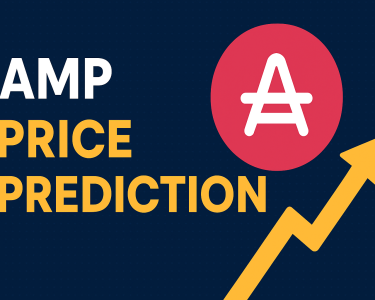How the Gig Economy is Transforming Personal Finance
The gig economy, characterized by short-term, flexible jobs or freelance work, has significantly altered traditional employment and income structures. This shift has profound implications for personal finance, as individuals navigate new financial realities and opportunities. This article explores how the gig economy is reshaping personal finance, analyzing the benefits and challenges it brings, and comparing traditional and gig economy financial management.

Understanding the Gig Economy
The gig economy includes various types of work arrangements such as freelance jobs, contract work, and temporary positions facilitated through digital platforms. These platforms, like Uber, Upwork, and Fiverr, connect individuals with clients or employers needing short-term services. Unlike traditional employment, gig workers often have multiple sources of income and greater flexibility in their work schedules.
Financial Benefits of the Gig Economy
Increased Earning Potential
One of the significant benefits of the gig economy is the potential for increased earning. Gig workers can often set their rates and take on multiple jobs simultaneously, potentially boosting their income compared to traditional salaried positions. This flexibility allows them to capitalize on high-demand periods and leverage their skills in various ways.
Flexible Work Arrangements
The flexibility of gig work allows individuals to balance personal and professional responsibilities more effectively. This flexibility can lead to better job satisfaction and improved mental health, as workers can design their schedules to fit their lifestyles. For those managing family responsibilities or pursuing personal projects, the gig economy offers a level of autonomy not typically found in conventional jobs.
Diversified Income Streams
Gig workers often engage in multiple types of work, providing diverse income streams. This diversification can offer financial stability, as a downturn in one gig might be offset by earnings from another. For instance, a graphic designer might freelance on design projects while also teaching online courses, thus reducing reliance on a single source of income.
Financial Challenges of the Gig Economy
Income Instability
Despite the potential for increased earnings, gig workers frequently face income instability. Unlike salaried employees, who receive regular paychecks, gig workers may experience fluctuations in their income due to varying demand for their services. This inconsistency can make budgeting and saving more challenging, as income levels are less predictable.
Lack of Employee Benefits
Gig workers typically do not receive traditional employee benefits such as health insurance, retirement plans, or paid leave. This absence of benefits requires gig workers to independently secure their insurance and retirement plans, often at a higher cost. The responsibility of managing these aspects can be a significant financial burden, particularly for those with lower earnings.
Self-Employment Taxes
Gig workers are considered self-employed and, therefore, must manage their own taxes. This involves paying both the employee and employer portions of Social Security and Medicare taxes, known as self-employment tax. Additionally, gig workers are responsible for tracking their income and expenses, which can be complex and time-consuming.
Financial Planning Strategies for Gig Workers
Building an Emergency Fund
Given the income instability in the gig economy, building an emergency fund is crucial. Financial experts recommend saving three to six months’ worth of expenses to buffer against periods of low income or unexpected financial needs. This fund provides a safety net and helps manage the unpredictability of gig work.
Managing Cash Flow
Effective cash flow management is essential for gig workers. Creating a budget that accounts for irregular income and planning for periods of low earnings can help maintain financial stability. Utilizing financial tools and apps to track income and expenses can aid in managing cash flow and making informed financial decisions.
Securing Insurance and Retirement Plans
Gig workers should proactively seek out health insurance options and retirement savings plans. Various platforms and organizations offer resources for finding affordable health insurance and retirement plans designed for self-employed individuals. Exploring these options ensures that gig workers can protect their health and plan for the future.
Comparative Analysis: Traditional Employment vs. Gig Economy
Income Stability
| Aspect | Traditional Employment | Gig Economy |
| Income Stability | Regular, predictable salary | Variable, project-based income |
| Benefits | Health insurance, retirement plans, paid leave | No standard benefits; must be obtained independently |
Flexibility and Autonomy
| Aspect | Traditional Employment | Gig Economy |
| Work Schedule | Fixed hours and location | Flexible hours and locations |
| Job Variety | Specific job role | Multiple roles and projects |
Financial Management
| Aspect | Traditional Employment | Gig Economy |
| Tax Responsibilities | Employer handles taxes | Self-employment tax, independent filing |
| Financial Planning | Often managed by employer | Requires self-management and planning |
Future Outlook for Gig Economy and Personal Finance
As the gig economy continues to expand, its impact on personal finance is likely to deepen. Innovations in technology and shifts in labor market dynamics will further shape how gig workers manage their finances. The rise of new financial tools tailored for gig workers, such as advanced budgeting apps and platforms offering customized insurance plans, could help address some of the current challenges. Additionally, legislative changes and increased recognition of gig work may lead to better benefits and protections for workers. However, staying informed and adaptable will remain crucial as the landscape evolves. Embracing these changes and planning proactively will be key to leveraging the benefits of the gig economy while mitigating its financial risks.
Conclusion
The gig economy represents a transformative shift in personal finance, offering both opportunities and challenges. While it provides flexibility, potential for increased earnings, and diversified income streams, it also brings income instability, lack of benefits, and additional financial responsibilities. Adapting to these changes requires strategic financial planning and proactive management of resources. As the gig economy continues to evolve, individuals must navigate this landscape thoughtfully to optimize their financial well-being and achieve long-term stability.




